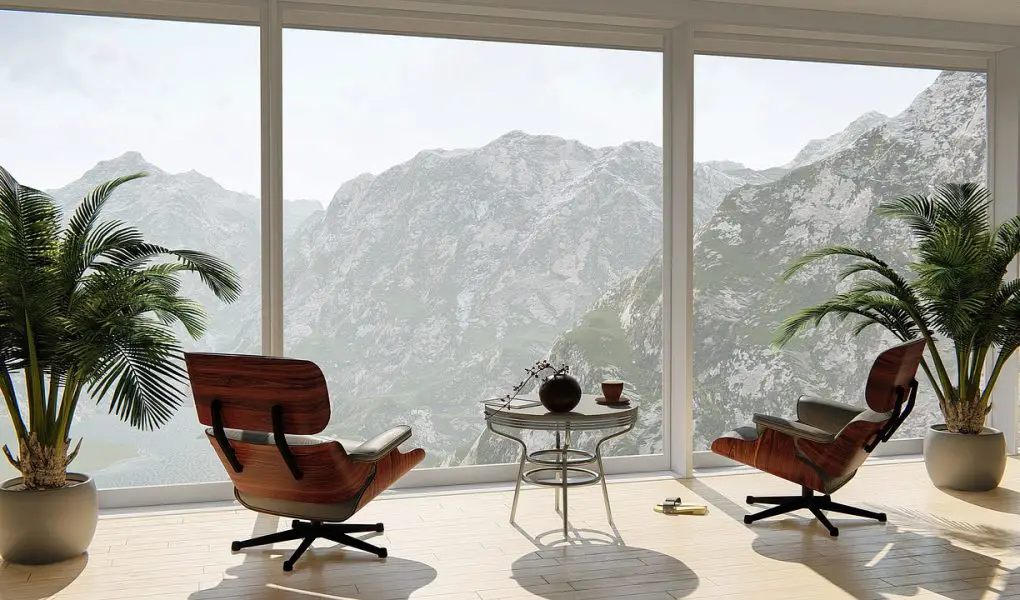Are you looking to design a sustainable room that is both functional and environmentally-friendly?
Look no further than ChatGPT, the AI-powered assistant that can help you create the perfect eco-friendly space.
Here’s how:
Step 1: Define your vision
Before you start designing your sustainable room, it’s important to have a clear vision of what you want to achieve.
Do you want a minimalist space with natural materials, or a colourful room with recycled accents?
Do you want to use solar energy or water-saving appliances? Whatever your vision is, ChatGPT can help you refine it and provide ideas to make it a reality.
Step 2: Consider the basics
When designing a sustainable room, there are some basic elements to consider. These include:
- Energy efficiency: How can you minimize energy consumption and reduce your carbon footprint? ChatGPT can suggest energy-saving devices and renewable energy options, like solar panels or wind turbines.
- Water conservation: How can you save water and reduce waste? ChatGPT can recommend low-flow shower heads, faucets, and toilets, as well as water-efficient appliances.
- Natural materials: How can you use natural, sustainable materials in your room? ChatGPT can suggest options like bamboo, cork, or reclaimed wood.
- Indoor air quality: How can you improve the air quality in your room? ChatGPT can suggest non-toxic paints, low-VOC materials, and air-purifying plants.
Step 3: Get creative.
Once you’ve covered the basics, it’s time to get creative. ChatGPT can help you brainstorm ideas for a sustainable room that reflects your personality and style.
Some eco-friendly design ideas to consider include:
- Up-cycling: Can you repurpose old furniture or decor items to give them new life? ChatGPT can suggest DIY tutorials for up-cycling projects.
- Natural light: Can you maximize natural light in your room to reduce energy consumption? ChatGPT can suggest window treatments or light-filtering materials that allow natural light to flow in.
- Vertical gardens: Can you create a living wall or vertical garden to improve air quality and add natural beauty to your room? ChatGPT can recommend plant species that thrive in indoor environments.
- Energy-generating devices: Can you incorporate energy-generating devices like kinetic flooring or piezoelectric tiles to generate electricity? ChatGPT can suggest suppliers or manufacturers of such devices.
10 Hacks for Using ChatGPT to Simplify Your Interior Design Process
Step 4: Incorporate sustainability into the entire room design.
Sustainability is not just about individual elements in the room, but also about the overall design.
ChatGPT can help you create a cohesive and sustainable design by:
- Choosing a colour palette that complements natural materials and promotes relaxation.
- Creating a floor plan that maximizes natural light and air flow.
- Selecting furniture and decor items made from sustainable materials, like bamboo or recycled plastic.
- Choosing textiles made from natural fibres like cotton or linen, which are biodegradable and have low environmental impact.
Step 5: Take action.
Once you’ve finalized your sustainable room design, it’s time to take action. ChatGPT can suggest suppliers, manufacturers, or contractors that can help you bring your design to life.
You can also use ChatGPT to find sustainable home goods and decor items, or to calculate the carbon footprint of your room.
Step 6: Choose sustainable lighting options.
Lighting can play a big role in energy consumption, so it’s important to choose sustainable lighting options. ChatGPT can recommend LED or CFL light bulbs, which are energy-efficient and long-lasting.
You can also consider using smart lighting systems that automatically adjust to the amount of natural light in the room or motion sensors to turn lights off when no one is in the room.
Step 7: Optimize your heating and cooling systems.
Heating and cooling can account for a significant portion of your energy usage, so it’s important to optimize these systems for efficiency. ChatGPT can recommend programmable thermostats, which allow you to set the temperature according to your schedule, or duct sealing and insulation to prevent heat loss or gain.
You can also consider using passive solar design elements, like south-facing windows, to help regulate the temperature in your room naturally.
Step 8: Incorporate sustainable storage solutions.
Storage is an essential part of any room, but it can also be a source of waste and clutter. ChatGPT can recommend sustainable storage solutions, like using recycled or up-cycled containers, or repurposing old furniture as storage units.
You can also consider using open shelving or hanging racks to reduce the need for additional storage units.
Step 9: Reduce waste and promote recycling.
Reducing waste and promoting recycling are important elements of a sustainable room. ChatGPT can recommend composting systems or recycling bins to help you reduce waste.
You can also consider using reusable containers, like glass or stainless steel, to store food or drinks, or using cloth napkins or towels instead of paper ones.
Step 10: Add personal touches.
Adding personal touches to your sustainable room can help make it feel like home. ChatGPT can recommend sustainable decor items, like handmade pottery or woven textiles made from natural fibres.
You can also consider adding personal touches like photos, artwork, or souvenirs from your travels that reflect your values and interests.
Step 11: Share your design with others.
Finally, once you’ve created your sustainable room using ChatGPT, consider sharing your design with others. You can post photos on social media or write a blog post about your experience. By sharing your sustainable room design, you can inspire others to create their own eco-friendly spaces and make a positive impact on the environment.
Conclusion.
Designing a sustainable room using ChatGPT is an exciting and rewarding process that can help you create a space that is both functional and environmentally-friendly.
By incorporating sustainable elements like energy-efficient appliances, natural materials, and recycling systems, you can reduce your carbon footprint and make a positive impact on the planet.
So, don’t be afraid to get creative and try new things – with ChatGPT by your side, the possibilities are endless!




